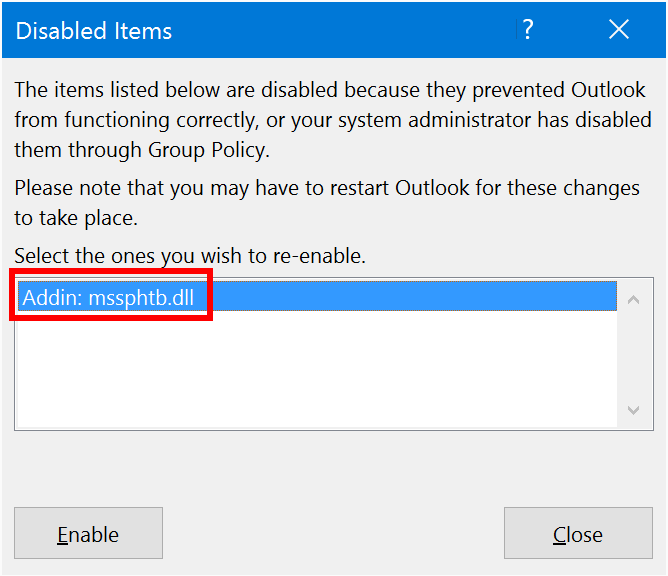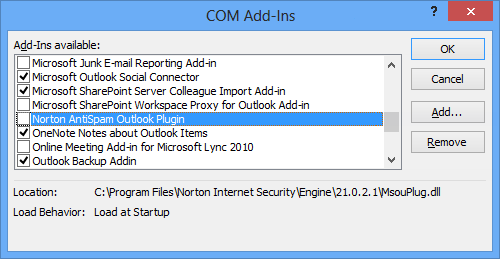

- #Icloud outlook add in disabled 2010 how to#
- #Icloud outlook add in disabled 2010 for windows 10#
- #Icloud outlook add in disabled 2010 free#
This add-in allows you to sync data with Access.
#Icloud outlook add in disabled 2010 for windows 10#
This add-in is not needed when you use the OneNote for Windows 10 app instead of OneNote as part of Microsoft 365 Apps or Office. For instance: Using OneNote to create linked Appointment Tasks. In case you also use OneNote to save additional notes and have them linked with Outlook or create Task items in OneNote. Required for when you use Outlook 2007 and have an Exchange mailbox which has Unified Messaging features enabled on the Exchange server.

Skype for Business is being replaced by Microsoft Teams so you may no longer have this add-in. When you have Skype for Business installed (part of Microsoft 365 ProPlus), this add-in offers various integration features such as the “New Skype Meeting” button in the Calendar. This add-in offers various integration features such as the “New Teams Meeting” button in the Calendar. When you have Microsoft Teams installed and then select the Calendar in Teams, this add-in is automatically added to Outlook.
#Icloud outlook add in disabled 2010 free#
It is not needed when you do not use SharePoint and even then, you are free to disable it if you do not like the feature. This add-in scans your Sent Items folder to determine which colleagues are being offered on the Add Colleagues page on a user’s SharePoint My Site.

#Icloud outlook add in disabled 2010 how to#
To see which add-ins you have installed and for instructions on how to disable them see: Enable/Disable add-ins. But as you’ve probably installed these type of add-ins more consciously, we’ll leave them out of this overview. Then there are of course a whole lot of other add-ins which are primarily focused on adding functionality to Outlook. In any case, they are not needed for proper operation of Outlook itself. Whether those are needed depends on if and how you use that application. In addition, other Microsoft applications or 3rd party applications could add some add-ins to Outlook as well. Not all of them are activated and not all the ones which are activated by default are needed in every configuration. Outlook indeed already comes with its own set of add-ins. Which add-ins do I really need and which are safe to disable? I now try to “weed out” the additional add-ins hoping that it will improve my Outlook startup time as it is fast when launching Outlook in Safe Mode. I thought I was just using “plain vanilla” Outlook without add-ins but apparently Outlook already comes with some pre-installed and some others were added by installing other applications.

I checked the list of add-ins that I have installed for Outlook and I’m a bit surprised how many I have installed.


 0 kommentar(er)
0 kommentar(er)
